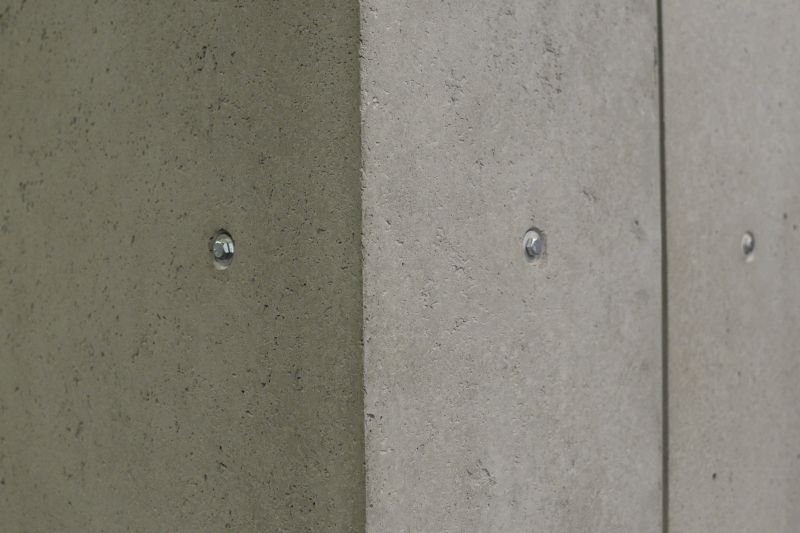Expert Picks For Essential Cement Installation Equipment
Browse our curated list of top tools and accessories that help you execute cement installations with precision and ease.
 Products designed for cement installations encompass a wide range of tools and materials essential for creating durable and stable structures. Whether undertaking a small repair, a DIY project, or a large-scale construction, selecting the right products can significantly influence the quality and longevity of the finished work. These products include various types of adhesives, fasteners, mixing tools, and reinforcement materials, each tailored to specific needs within cement-based projects.
Products designed for cement installations encompass a wide range of tools and materials essential for creating durable and stable structures. Whether undertaking a small repair, a DIY project, or a large-scale construction, selecting the right products can significantly influence the quality and longevity of the finished work. These products include various types of adhesives, fasteners, mixing tools, and reinforcement materials, each tailored to specific needs within cement-based projects.
Top Overall Option
Versatile Cement Adhesive
A highly adaptable cement adhesive offers excellent bonding capabilities for various surfaces and conditions, making it suitable for both small repairs and larger construction projects. It provides ease of application, strong adhesion, and durability, helping to ensure a secure bond in cement installations.
Types of Products For Cement Installations
Concrete Mixers
Tools used to combine cement, sand, gravel, and water into a consistent mixture suitable for pouring and setting.
Bonding Agents
Adhesives formulated to enhance the bond between existing cement surfaces and new applications.
Reinforcement Mesh
Steel or plastic mesh used to reinforce cement structures, adding tensile strength and reducing cracking.
Rebar and Steel Rods
Metal reinforcement bars that provide structural support within cement slabs and walls.
Cement Trowels
Tools for spreading, smoothing, and finishing cement surfaces for a professional look.
Waterproof Sealants
Products designed to prevent water penetration and protect cement structures from moisture damage.
Curing Compounds
Sprays or liquids applied to freshly poured cement to retain moisture and promote proper curing.
Fast-Set Cement
Specialized cement mixes that harden quickly, ideal for urgent repairs or small projects.
Mixing Buckets and Tools
Containers and implements for combining cement and other materials efficiently.
Expansion Joints
Materials used to allow for movement within cement structures, reducing stress and cracking.
Surface Sealers
Products that provide a protective coating on finished cement surfaces to improve durability.
Anchor Bolts
Hardware used to secure structures to cement foundations or slabs.
Grout and Fillers
Materials used to fill gaps, voids, or to set fixtures within cement structures.
Form Liners and Molds
Tools to shape and form cement surfaces for decorative or structural purposes.
Vibrators and Compactors
Equipment used to eliminate air pockets and ensure proper compaction of cement mixtures.
Popular Choices
Widely used for bonding cement surfaces, these adhesives offer reliable adhesion for various applications.
Commonly selected for enhancing structural integrity in slabs and walls.
Popular for protecting cement structures from moisture and extending their lifespan.
Favored for quick repairs and projects requiring rapid setting times.
Essential for achieving smooth and professional cement surfaces.
Popular for ensuring proper hydration and curing of new cement pours.
Frequently used to accommodate movement and prevent cracking in large slabs.
Commonly chosen for securing fixtures and structural elements to cement foundations.
Popular for finishing cement surfaces with a protective layer.
Widely used to compact cement mixtures and remove air pockets during pouring.
Essential for small-scale mixing tasks, frequently selected for convenience.
Popular for reinforcing larger cement structures requiring added strength.
Chosen for decorative finishes and custom shapes in cement projects.
Frequently used for filling gaps and securing fixtures within cement structures.
Commonly selected for waterproofing basements and foundations.
Proper preparation and application are crucial when working with cement. This involves selecting appropriate bonding agents to ensure strong adhesion between surfaces, using suitable mixing equipment to achieve consistent consistency, and employing reinforcement materials like mesh or rebar to enhance structural integrity. Additionally, safety gear such as gloves and masks should be considered to protect against dust and chemical exposure during installation.
Understanding the different product options available can help in making informed decisions. For example, choosing the right type of concrete adhesive can improve bond strength, while selecting appropriate trowels or mixing tools can facilitate even application and mixing. Durable sealants and waterproofing products are also vital for protecting cement structures from moisture and wear over time. By carefully selecting and using these products, both DIY enthusiasts and professionals can achieve more reliable and long-lasting results in their cement projects.
Key Buying Considerations
- Compatibility with the specific cement or concrete mix being used.
- Application environment and exposure conditions, such as moisture or load-bearing requirements.
- Curing time and whether the product supports rapid setting or extended workability.
- Ease of application, including tools required and user-friendliness.
- Durability and resistance to cracking, moisture, and wear over time.
- Strength and bonding capabilities, especially for adhesives and reinforcement materials.
- Compatibility with existing surfaces or structures to ensure proper adhesion.
- Cost-effectiveness and overall value for the scope of the project.
- Safety considerations, including handling instructions and protective gear.
- Manufacturer reputation and product reviews for reliability and consistency.
- Environmental conditions during application, such as temperature and humidity.
- Availability of complementary products, like sealants and finishing tools.
- Project scale and whether the product is suitable for small repairs or large constructions.
- Long-term maintenance and whether the product facilitates easy upkeep.
- Regulatory compliance and adherence to building standards.
This page contains affiliate links. We may earn a commission if you purchase through these links, which helps support our content creation.
